
Andy Warhol was an American visual artist, film director, producer, and leading figure in the pop art movement. His works explore the relationship between artistic expression, advertising, and celebrity culture that flourished by the 1960s, and span a variety of media, including painting, silkscreening, photography, film, and sculpture. Some of his best-known works include the silkscreen paintings Campbell's Soup Cans (1962) and Marilyn Diptych (1962), the experimental films Empire (1964) and Chelsea Girls (1966), and the multimedia events known as the Exploding Plastic Inevitable (1966–67).
Naomi Levine was an American actress, artist and filmmaker. She was a friend of Jack Smith and pop artist and filmmaker Andy Warhol. In 1964, she directed the film titled Yes. In 1973, several of her films were screened at the Museum of Modern Art.
Warhol superstars were a clique of New York City personalities promoted by the pop artist Andy Warhol during the 1960s and early 1970s. These personalities appeared in Warhol's artworks and accompanied him in his social life, epitomizing his dictum, "In the future everyone will be famous for fifteen minutes". Warhol would simply film them, and declare them "superstars".
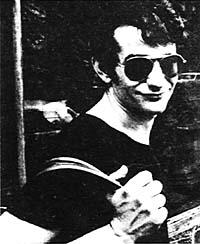
Robert Olivo, better known by his stage name Ondine, was an American actor. He is best known for appearing in a series of films in the mid-1960s by Andy Warhol, whom he claimed to have met in 1961 at an orgy:
I was at an orgy, and he [Warhol] was, ah, this great presence in the back of the room. And this orgy was run by a friend of mine, and, so, I said to this person, 'Would you please mind throwing that thing [Warhol] out of here?' And that thing was thrown out of there, and when he came up to me the next time, he said to me, 'Nobody has ever thrown me out of a party.' He said, 'You know? Don't you know who I am?' And I said, 'Well, I don't give a good flying fuck who you are. You just weren't there. You weren't involved...'
Blow Job is a silent film directed by Andy Warhol. It depicts the face of an uncredited DeVeren Bookwalter as he apparently receives fellatio from an unseen partner. While shot at 24 frames per second, Warhol specified that it should be projected at 16 frames per second, slowing it down by a third.
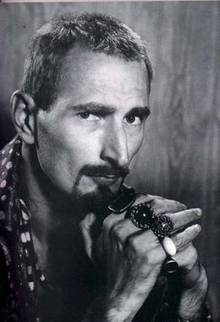
Jack Smith was an American filmmaker, actor, and pioneer of underground cinema. He is generally acclaimed as a founding father of American performance art, and has been critically recognized as a master photographer.
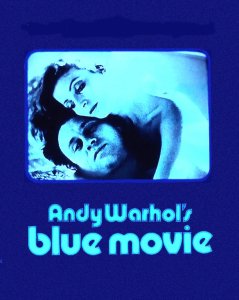
Blue Movie is a 1969 American erotic film written, produced and directed by Andy Warhol. It is the first adult erotic film depicting explicit sex to receive wide theatrical release in the United States, and is regarded as a seminal film in the Golden Age of Porn (1969–1984), which, before the legalization of pornography in Denmark on July 1, 1969, started on June 12, 1969 with the release of Blue Movie at the Elgin Theater, and later, the New Andy Warhol Garrick Theatre, in New York City. Blue Movie helped inaugurate the "porno chic" phenomenon, in which porn was publicly discussed by celebrities and taken seriously by film critics, in modern American culture, and shortly thereafter, in many other countries throughout the world. According to Warhol, Blue Movie was a major influence in the making of Last Tango in Paris, an internationally controversial erotic drama film starring Marlon Brando and released a few years after Blue Movie was made. Viva and Louis Waldon, playing themselves, starred in Blue Movie.

Lonesome Cowboys is a 1968 American Western film directed by Andy Warhol and written and produced by Paul Morrissey. The film is a satire of Hollywood Westerns, and was initially screened in November 1968 at the San Francisco International Film Festival, where it won the Best Film Award. On May 5, 1969, it was shown for initial viewings at the New Andy Warhol Garrick Theatre in New York City.
Eat (1964) is a 45-minute underground film created by Andy Warhol and featuring painter Robert Indiana, filmed on Sunday, February 2, 1964, in Indiana's studio. The film was first shown by Jonas Mekas on July 16, 1964, at the Washington Square Gallery at 530 West Broadway.
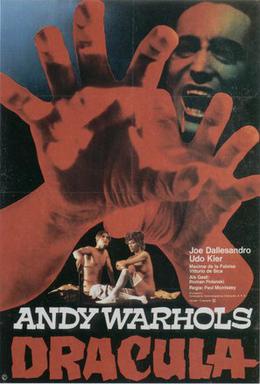
Blood for Dracula is a 1974 horror film written and directed by Paul Morrissey and starring Udo Kier, Joe Dallesandro, Maxime McKendry, Stefania Casini, Arno Juerging, and Vittorio de Sica. Upon its initial 1974 release in West Germany and the United States, Blood for Dracula was released as Andy Warhol's Dracula.
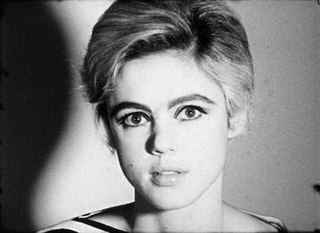
The Screen Tests are a series of short, silent, black-and-white film portraits by Andy Warhol, made between 1964 and 1966, generally showing their subjects from the neck up against plain backdrops. The Screen Tests, of which 472 survive, depict a wide range of figures, many of them part of the mid-1960s downtown New York cultural scene. Under Warhol's direction, subjects of the Screen Tests attempted to sit motionless for around three minutes while being filmed, with the resulting movies projected in slow motion. The films represent a new kind of portraiture—a slowly moving, nearly still image of a person. Warhol's Screen Tests connect on one hand with the artist's other work in film, which emphasized stillness and duration (for example, Sleep and Empire, and on the other hand with his focus after the mid-1960s on documenting his celebrity milieu in paintings and other works.

René Rivera,, known professionally as Mario Montez, was one of the Warhol superstars, appearing in thirteen of Andy Warhol's underground films from 1964 to 1966. He took his name as a male homage to the actress Maria Montez, an important gay icon in the 1950s and 1960s. Before appearing in Warhol's films, he appeared in Jack Smith's underground films Flaming Creatures and Normal Love. Montez also stars in the Ron Rice film Chumlum, made in 1964. Mario Montez, was "a staple in the New York underground scene of the 1960s and '70s."
Sleep is a 1964 American avant-garde film by Andy Warhol. Lasting five hours and 21 minutes, it consists of looped footage of John Giorno, Warhol's lover at the time, sleeping.
Jane Holzer, is an American art collector and film producer who was previously an actress, model, and Warhol superstar. She was often known by the nickname Baby Jane Holzer. She was also known as a 1960s fashion icon.
Eating Too Fast is a 1966 Andy Warhol film made at The Factory. It was originally titled Blow Job #2 and features art critic and writer Gregory Battcock (1937–1980). The film is 67 minutes long and is, in effect, a black and white sound film remake of Warhol's Blow Job (1964). Battcock had previously appeared in Warhol's films Batman Dracula (1964) and Horse (1965).
Dorothy Dean was an African-American socialite, connected to Andy Warhol's The Factory—for which she appeared in the films Batman Dracula (1964), Space (1965), My Hustler (1965), Afternoon (1965), and Chelsea Girls (1966)—and Max's Kansas City, where she worked as door person. She also appeared in the documentary film Superartist (1967) about Warhol and his films.

Tally Brown was a singer and actress who was part of the New York underground performance scene, particularly Andy Warhol's "Factory" and who appeared in or was the subject of films by Andy Warhol and Rosa von Praunheim. She was born and died in New York City.
Kiss is a 1963 silent American experimental film directed by Andy Warhol, which runs 50 minutes and features various couples – man and woman, woman and woman, man and man – kissing for 3½ minutes each. The film features Naomi Levine, Barbara Rubin, Gerard Malanga, Rufus Collins, Johnny Dodd, Ed Sanders, Mark Lancaster, Fred Herko, Baby Jane Holzer, Robert Indiana, Andrew Meyer, John Palmer, Pierre Restany, Harold Stevenson, Philip van Rensselaer, Charlotte Gilbertson, Marisol, Steven Holden, Bela Lugosi and unidentified others.
Beverly Grant was an actress and filmmaker who appeared in films by Andy Warhol, Jack Smith, Gregory Markopoulos, Ira Cohen, Ron Rice, and Stephen Dwoskin, on the off-off Broadway stage in works by Ronald Tavel and LeRoi Jones, as well as collaborated with her one-time husband, experimental filmmaker and musician, Tony Conrad. Smith, the avant-garde filmmaker of Flaming Creatures and Normal Love, in which Grant appeared, called her "the queen of the underground – both undergrounds."
Couch (1964) is a feature-length underground film directed by Andy Warhol, and starring Gerard Malanga, Piero Heliczer, Naomi Levine, Gregory Corso, Allen Ginsberg, John Palmer, Baby Jane Holzer, Ivy Nicholson, Amy Taubin, Ondine, Peter Orlovsky, Jack Kerouac, Taylor Mead, Kate Heliczer, Rufus Collins, Joseph LeSeuer, Binghamton Birdie, Mark Lancaster, Gloria Wood, and Billy Name.









